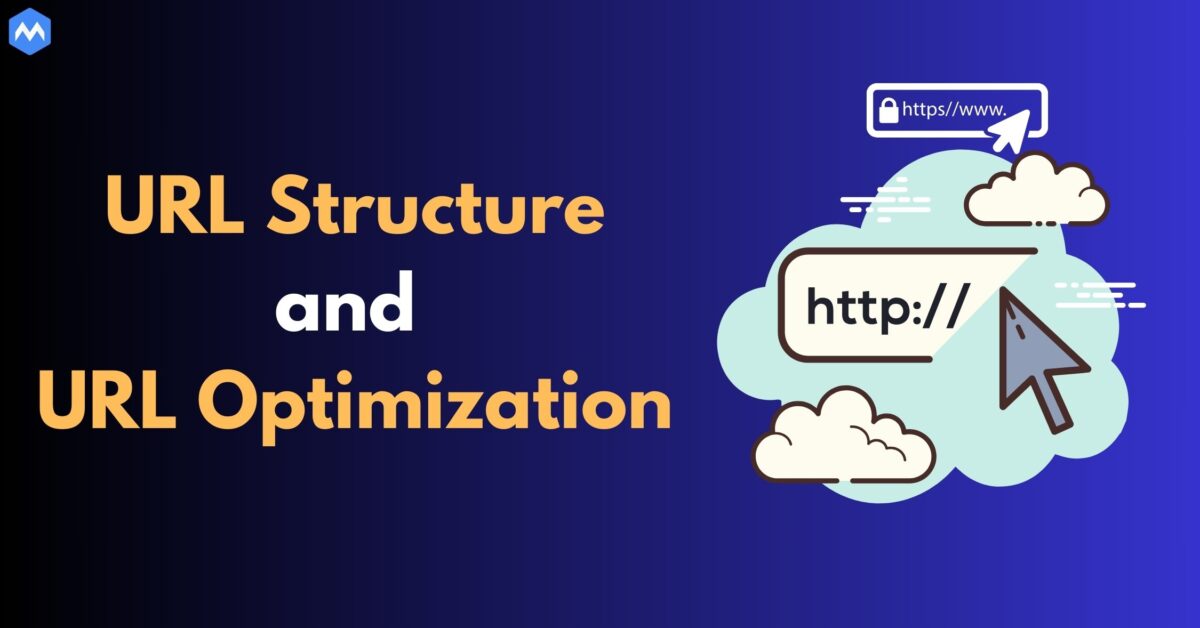Best Practices of Mastering URL Structure and Optimization
Every detail counts within the sizable subject of search engine optimisation (search engine marketing). From high-quality content to responsive design, the components contributing to a website’s success are myriad. One often underestimated yet crucial element is SEO URL structure.
Blog URL structures are a crucial component of SEO. URL components like categories and page names should be designed according to the user’s experience. Making them SEO-friendly is equally necessary, though.
By making it simpler for search engines to find your content, URL structure best practices can increase website traffic. Creating SEO-friendly URLs is an essential part of your overall SEO Audit plan because it can greatly impact your website’s search engine rating.
Continue reading to learn how to structure your URLs in the best possible way to rank higher in Google searches!
What is a URL?
The web address that we enter into a browser to visit a web page is called a Uniform Resource Locator, or URL. Typically, the URL includes phrases and keywords that indicate the type of content that is available on the website. This makes it easier for users to find the information they are searching for online. When you write a blog post, you should have your URL in mind from the start. An accurate URL will include phrases that match your content material and assist humans discover what they’re searching out online. Web URLs are also called links. A lot of individuals will click on a link to visit your website straight away.
What is URL structure?
A URL is an address on the internet. It incorporates a protocol, a site name, and a path. The protocol, which can be either http:// or https://, is how the browser gets information about that page.
The portion of the domain that appears before the primary “root” domain is called a subdomain. You can create multiple subdomains, but they are essentially different websites, so you do not want to have a lot of subdomains unless you need them. Your website’s content is organised using subdomains. A subdomain can be any character string; it’s not limited to just www.
The distinct address of a website is its domain name. Examples of top-level domains (TLDs) are net, org, and com, among many others! A page, post, or file’s precise location is referred to as its route. Your slug or permalink comes after your blog name.
It is the specific address of the page a user wants to go to. There are hyphens in the permalinks. As a URL can’t have a space. So, your blog title or keywords need a space between them, your blog will automatically convert that space into a hyphen.
Why does URL structure matter for SEO?
URLs are the organization of your website’s content. They are the link between users and your content. URL structure optimization matters for these two main reasons:
User Experience
- A great user experience is the most important factor when it comes to SEO.
- Use a reasonable URL structure with page hierarchies to enhance user experience. Intuitively prepared content makes your website easier to navigate for people.
- To encourage confidence rather than confusion among visitors, you should make your website as simple to navigate as you can.
- In addition to structuring your URLs with logical organization, use SEO-friendly URLs. SEO-friendly URLs are straightforward, simple to read, and contain keywords that accurately reflect the content of a website.
- Simple URLs provide the best user experience. Make sure that the URLs are optimised using keywords that convey the content of the page.
- URL Optimization helps search engines deliver relevant results to searchers, so searchers know exactly what they’ll see if they click the link.
PageRank
- URL structures tell Google about the contents and relationships between the website’s pages. Links pointing to pages on your website, or internal linking, also assist with this.
- URL Optimization for humans also facilitates the crawling and indexing of your website by search engine bots, giving users access to relevant content.
- URLs are a ranking factor in Google.
- URL Optimization structures promote Google PageRank (PR). Google uses PageRank to determine how valuable a web page is and how relevant it is to a search query.
The majority of PageRank goes to root domains, thus even if utilising keywords in your root pages will help you rank, you shouldn’t rely just on URL keywords. Useful content ought to be protected in URLs; do no longer overuse keywords.
SEO-friendly URLs increase the likelihood of the link being clicked, which can also increase your PageRank.
After your site goes live and anytime you make page URL edits, resubmits your sitemap in the Google Search Console. You want to submit your sitemap so search engines can immediately crawl and index your pages to keep your site up-to-date with SERPS (Search Engine Results Pages).
Read More: Mobile PPC Advertising: A Comprehensive Guide
SEO best practices for URLs
Keep it short and simple
Your URL should be as short as possible!
You want your URL to fit as much as possible in the search result because Google searches don’t display much of it. Additionally, you want it to be simple for readers to type in and for other bloggers to link to.
You can even cut out part of the title, like I did for this URL, to keep it as short as possible.
Short titles rank better on Google. Use no more than 50–60 characters, as per the study conducted by Cognitive SEO.
When I see a blog with a URL that is so long that it goes beyond my URL bar, I veer away immediately. That tells me that the writer doesn’t understand what they’re doing, so I don’t trust their other information.
Use Hyphens, Not Spaces
- Hyphens are the best practice for constructing SEO-friendly URLs that are searchable. Use them to replace spaces.
- Spaces can’t be read in a URL. They break the entire function.
- Adding underscores to your website can confuse Google and hinder its ability to comprehend it.
Redirect old URLs
You’ll likely make changes to your site over time, and you may choose a URL structure and then decide to change it later on to improve usability. In this instance, adding permanent redirects is advised and best practice.
Redirects make a guarantee that both humans and bots cannot access faulty links.
Anytime you edit or recharge a URL, upload a 301 redirect in order that if a person clicks the vintage URL, they will automatically be taken to the brand new URL and gain it without seeing a broken 404 error blunders web page.
Redirects might slow down your website, so stay away from using too many of them. One or two redirects are fine, but it’s best practice to make the page accessible without any redirect loops. To prevent redirects, it is crucial to choose a sensible URL structure when launching your website.
Use lowercase letters
All characters following the domain name in a URL are case-sensitive. This means that DesignPowers.com will still take you to designpowers.com, but designpowers.com/Contact will take you to a 404 page instead of our contact page.
Always use lowercase letters for your URLs, and if you happen to use uppercase, then update your links and redirect to the new ones.
Squarespace automatically defaults to using lowercase, so if that is your website platform, you have nothing to fret about when it comes to case sensitivity.
Remove dates from blog posts
Because searchers are continuously looking for the most recent content, content may be kept relevant by removing postdates from the blog post URL. URLs without dates can improve click-through rates from search engines and help content rank for years.
You don’t need to format your articles with the date unless they are about a particular event or day. In fact, formatting your posts with the date may make people less inclined to click through because they are more likely to read a current source than an out-of-date post from 2013.
It also allows for evergreen content, so you can go back and update high-performing posts with new content, and then republish the post with a new date, without having to redirect the old URL. Old content that has been updated and republished is a powerful SEO tactic.
Republished and updated old content is a potent SEO strategy. Not together with the postdate makes the URL easier to navigate for customers.
Conclusion
URLs are the building blocks of your website. URL optimization helps to increase your website traffic. Clean URLs are easier to share, look more reliable, and perform better in searches.
You should be able to use these recommended practices with your website URLs. Need help with your site. We increase customized techniques for every commercial enterprise we associate with; however the deliverables in our pricing table come up with a glimpse on the depth of carrier our search engine optimization crew provides.



Write a Comment